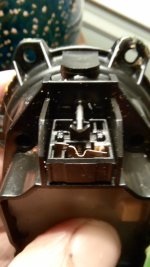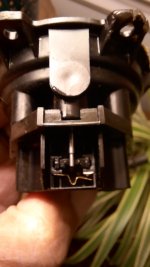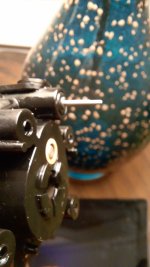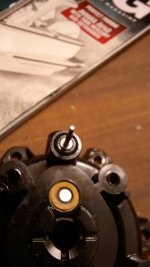woodycooper
Seaman
- Joined
- Sep 6, 2022
- Messages
- 54
I'm getting a "no oil" alarm (beep every other second) from my VRO. I've tested according to the book by using a clear hose with 1/2" marks. When I run the motor at idle I see the oil level in the clear tube drop according to specs (3 inches in 6-8 pulses). I cannot hear or feel the "clicks" that the various instructions tell me I should, but I do see a 1/2" drop happen at regular intervals. Problem is, after running for about 2 minutes the alarm goes off. I know oil is being pumped because I can see it drop and I'm pretty sure the "clicks" correspond to each 1/2" drop.
So, what causes the "click"? The explanations I see show a small plunger sucking in oil with each cylinder cycle, and just pumps oil pretty much continuously. Is there a small reservoir that gets filled up and "pulses" when full? I'm more curious at how it all works really.
And finally, if oil is pumping, why the alarm? (no it's not an overheat alarm, or fuel restriction, or LOW oil). The fuel pump is brand new, although my luck at brand new parts has been atrocious. If the past is a guide then the brand new fuel pump has about a 50/50 chance of being the culprit. If so, how can I confirm this without re-loading the parts cannon again...
Thanks
So, what causes the "click"? The explanations I see show a small plunger sucking in oil with each cylinder cycle, and just pumps oil pretty much continuously. Is there a small reservoir that gets filled up and "pulses" when full? I'm more curious at how it all works really.
And finally, if oil is pumping, why the alarm? (no it's not an overheat alarm, or fuel restriction, or LOW oil). The fuel pump is brand new, although my luck at brand new parts has been atrocious. If the past is a guide then the brand new fuel pump has about a 50/50 chance of being the culprit. If so, how can I confirm this without re-loading the parts cannon again...
Thanks























